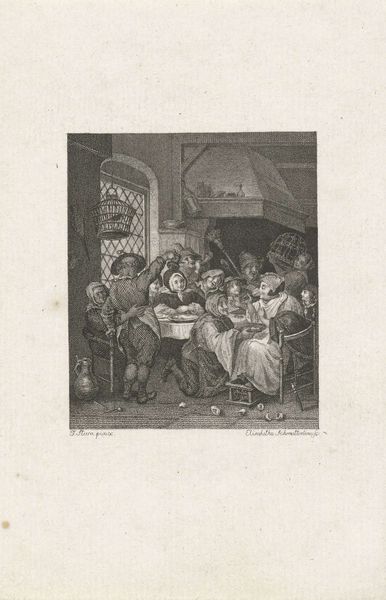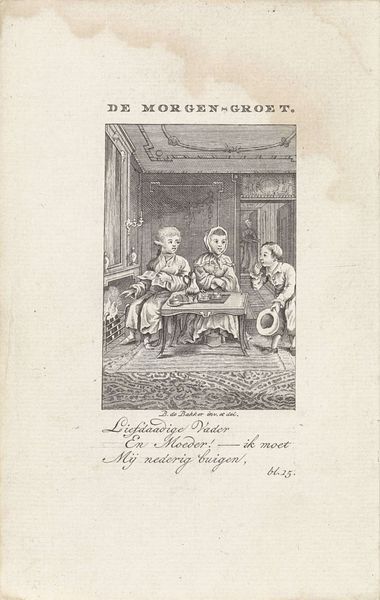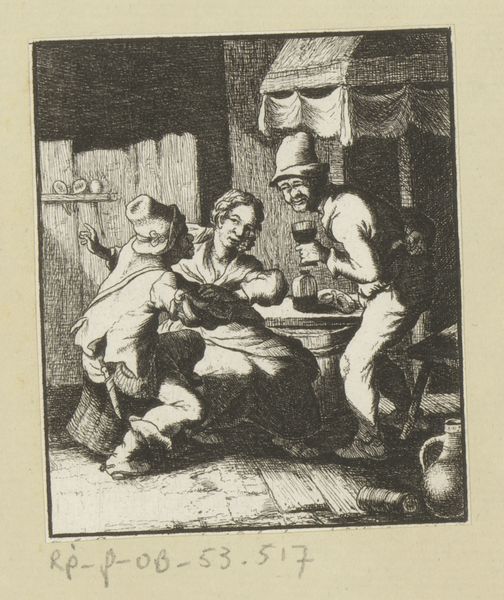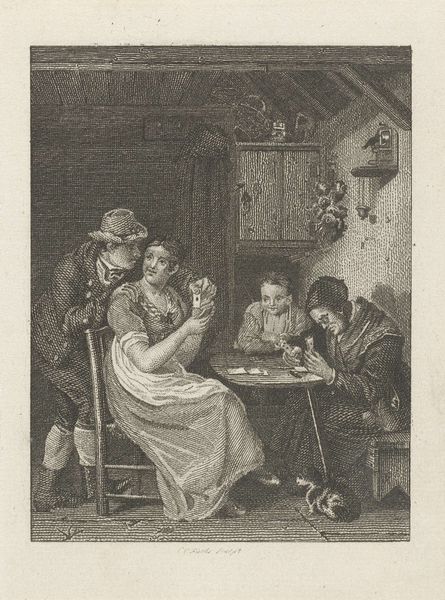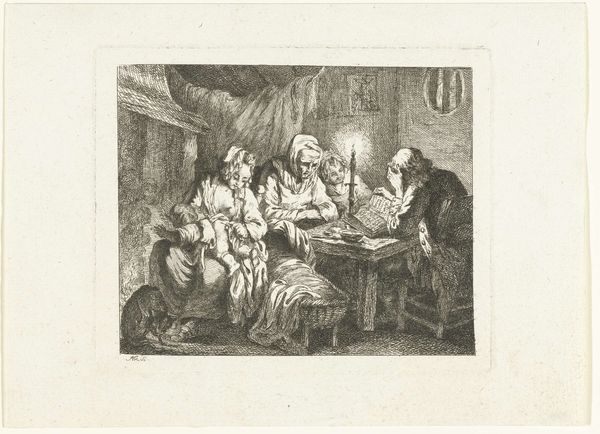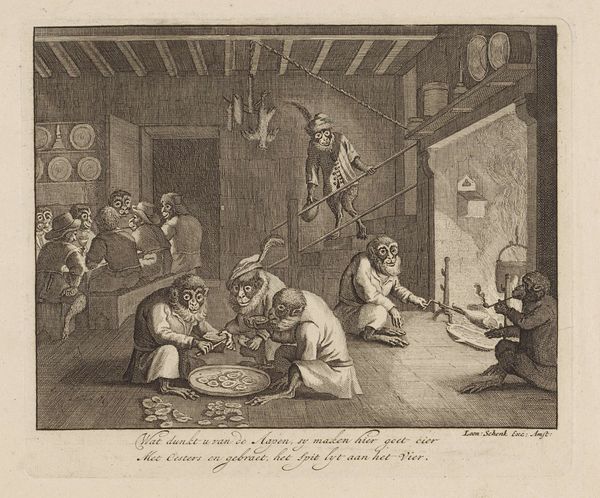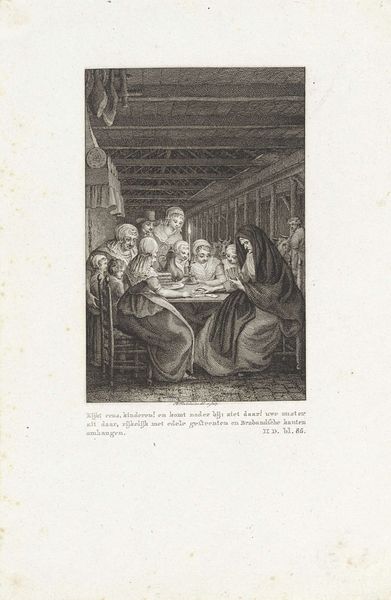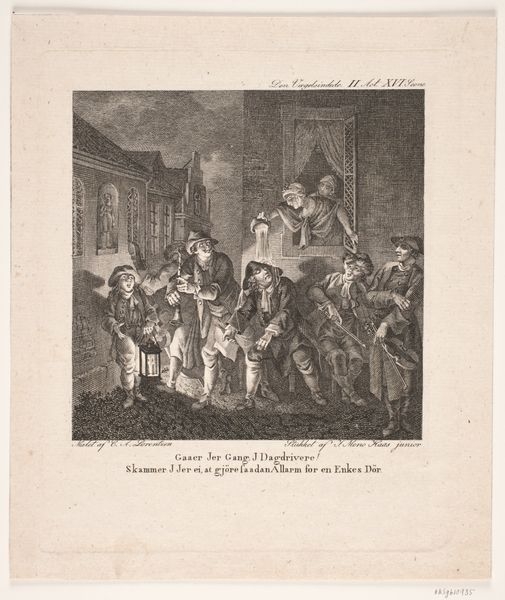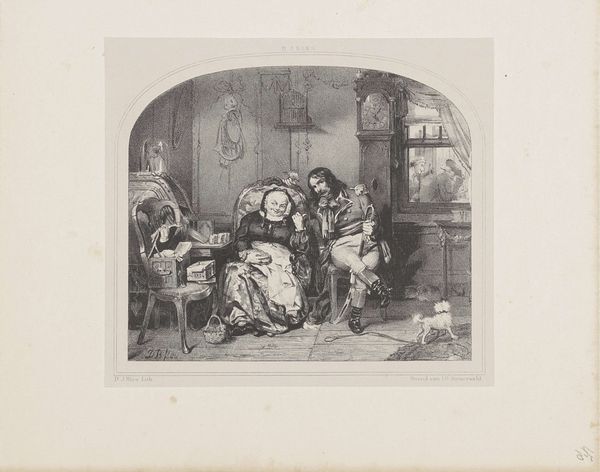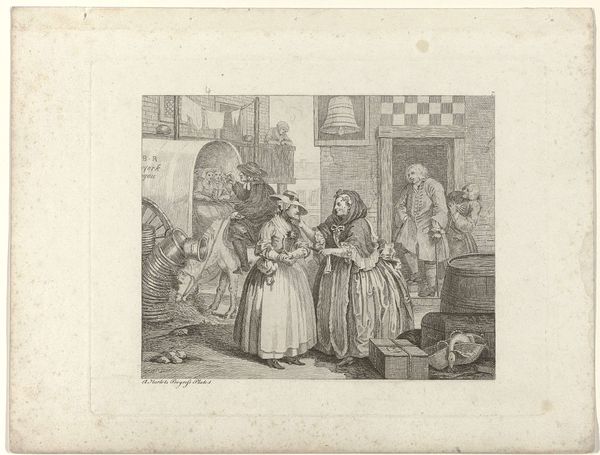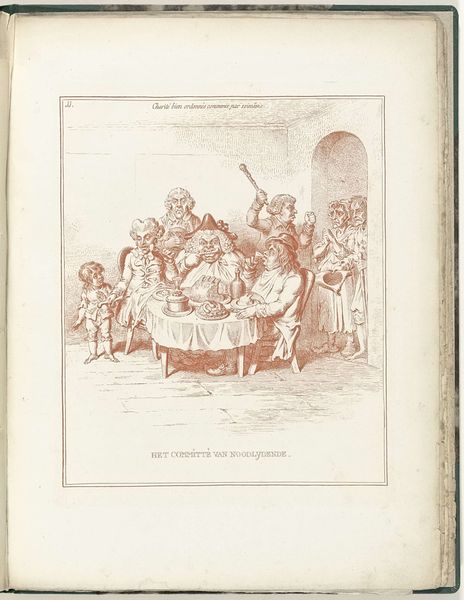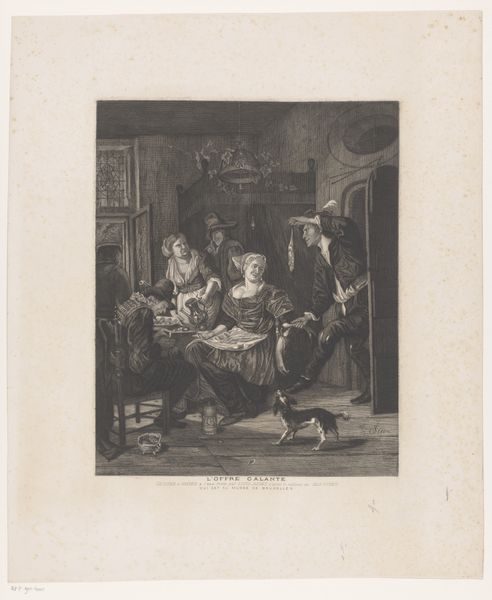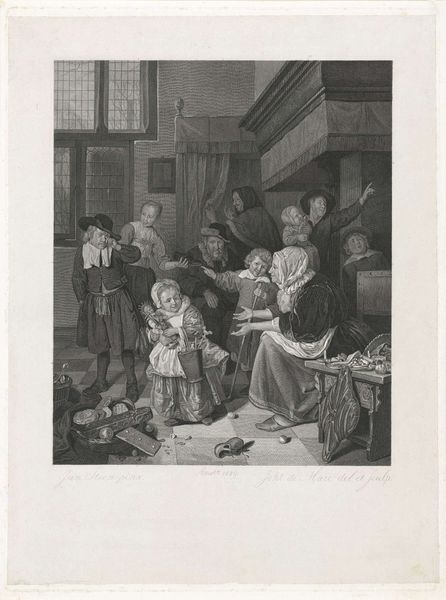
Dimensions: height 118 mm, width 90 mm
Copyright: Rijks Museum: Open Domain
Curator: Here we have "Driekoningenavond", or "Twelfth Night," an engraving from between 1814 and 1882, attributed to Elisabeth Barbara Schmetterling. It seems inspired by genre paintings of earlier eras. Editor: The dynamism is striking, isn't it? Even without color, there’s such an exuberance emanating from this composition. A real sense of a crowded, lively space, pushing forward into the viewer's space. Curator: Genre scenes like this were incredibly popular; depicting everyday life allowed viewers to connect with familiar activities and, often, provided moral commentary on social customs. Holiday celebrations, in particular, became opportunities to affirm cultural values. Editor: Absolutely, but observe the textures – the contrast between the rough-hewn surfaces of the interior and the intricate patterns in their clothing creates visual tension. And the layering of bodies and objects almost overwhelms the scene. Curator: Socially, such celebrations frequently functioned as spaces to question established order, momentarily inverting power structures through playful role reversals or the 'election' of temporary royalty for the night. Editor: I see that in the upward gesture of the figure about to disrupt a seated person under the center of the composition, perhaps enthroning a “king.” The artist skillfully used the sharp lines of the print to differentiate the space—the action pushes to the picture plane in contrast to the dark, undefined background. Curator: Right, in a time when social and religious rituals were increasingly being scrutinized by secular society, prints like these acted as both records and reflections of the cultural traditions people wished to preserve. Think how popular photographic documents of public demonstrations or communal action are even today! Editor: It's fascinating how a simple engraving manages to evoke such complexity—formally in its organization of chaotic figures, but also in its historical weight, suggesting the cultural meanings layered within this single, bustling scene. Curator: Indeed. By situating the scene in its historical context, we understand its function. A common engraving such as this offered a chance to grapple with how these traditional forms play an enduring role in self-perception.
Comments
No comments
Be the first to comment and join the conversation on the ultimate creative platform.
